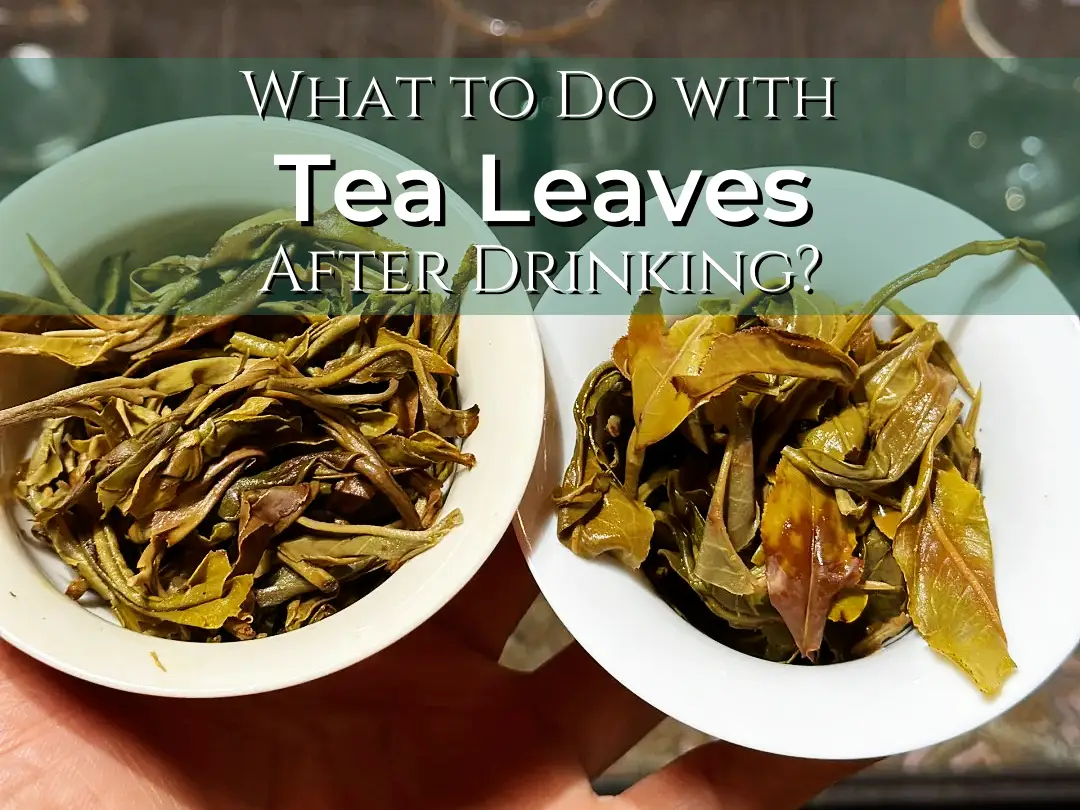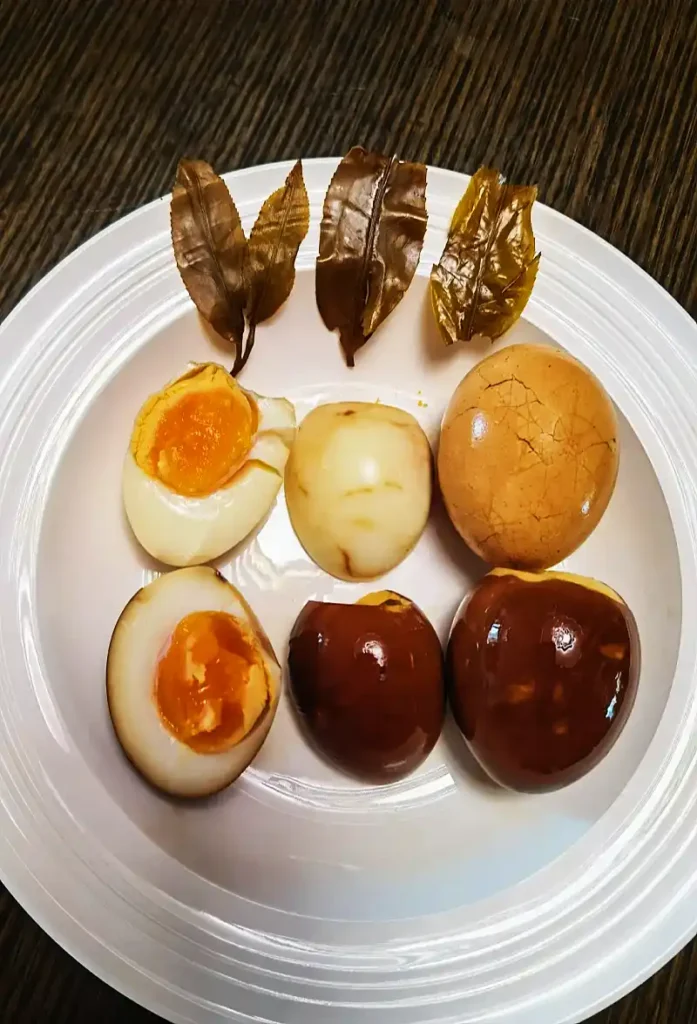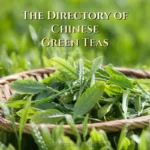As tea enthusiasts, we often focus on the perfect brew and the delightful experience of sipping our favorite teas. But have you ever wondered what happens to those used tea leaves once you’ve finished your cup? If you’re like most people, you might be tossing them in the trash without a second thought. However, there’s a world of possibilities waiting to be explored with those seemingly spent leaves. In this article, we’ll delve into the various ways you can repurpose and recycle your used tea leaves, turning what was once considered waste into a valuable resource.
Don’t Waste Your Used Tea Leaves
Before we dive into the myriad ways to reuse your tea leaves, we must understand why we should even bother. Even after steeping, tea leaves are packed with beneficial compounds and nutrients that can be harnessed for various purposes. By discarding them, we’re contributing to unnecessary waste and missing out on potential benefits for our health, home, and garden.
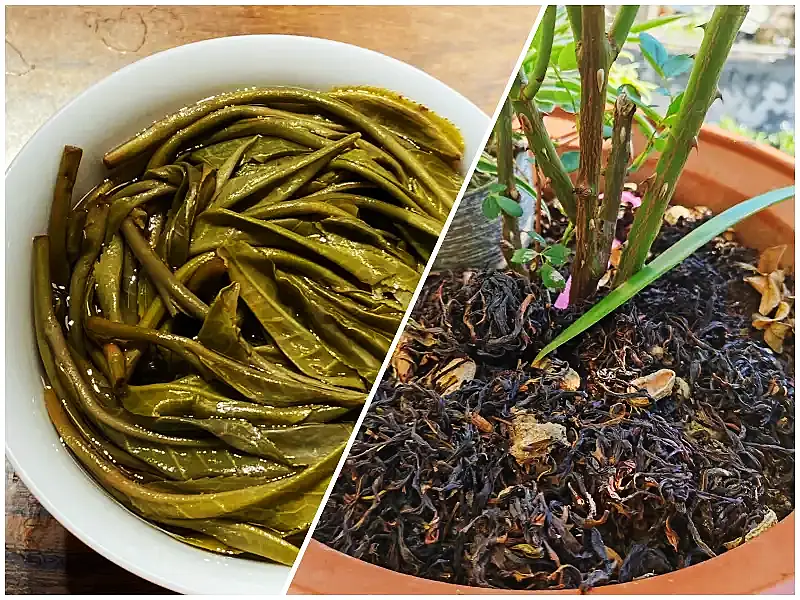
Used tea leaves contain residual caffeine, antioxidants, and tannins, which can be advantageous in many applications. These compounds can help with everything from reducing under-eye puffiness to deterring pests in your garden. Moreover, the fibrous nature of tea leaves makes them an excellent addition to compost, helping to improve soil structure and nutrient content.
From an environmental perspective, reusing tea leaves aligns with sustainable practices. By finding new purposes for what would otherwise end up in landfills, we can reduce our ecological footprint and contribute to a more circular economy. It’s a small step, but when multiplied by the millions of tea drinkers worldwide, it can make a significant impact.
Ways to Recycle Your Used Tea Leaves
Now that we understand the importance of not wasting our used tea leaves, let’s explore some creative and practical ways to give them a second life:
Enhance Your Garden
Used tea leaves are a boon for gardeners. Their slight acidity and nutrient content make them perfect for various garden applications:
- Compost Booster: Add used tea leaves to your compost pile. They’re rich in nitrogen and help speed up the decomposition process.
- Soil Amendment: Work damp tea leaves directly into the soil around acid-loving plants like rhododendrons, azaleas, and ferns.
- Natural Fertilizer: Sprinkle cooled, used tea leaves around the base of your plants to provide a slow-release fertilizer.
- Pest Deterrent: Scatter used tea leaves around plants to deter slugs and cats from your garden beds.
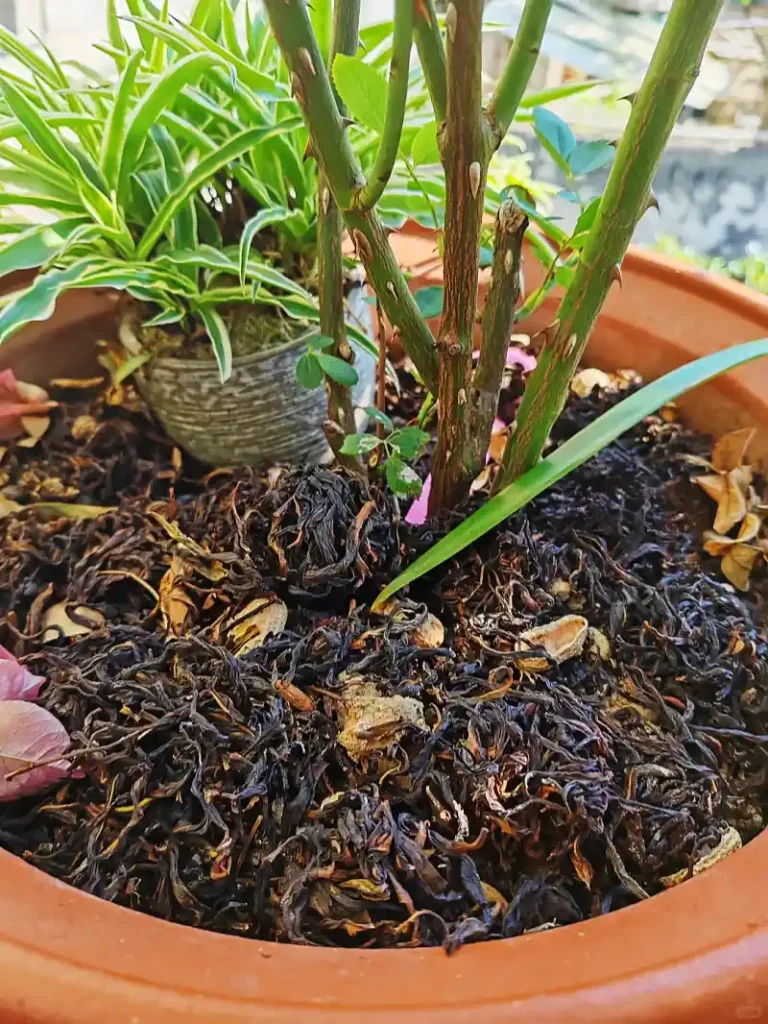
Natural Cleaning Agent
The mild abrasive nature of tea leaves, combined with their natural tannins, makes them excellent for cleaning:
- Wood Floor Cleaner: Brew a strong tea with used leaves and use it to mop wooden floors. The tannins will add a subtle shine.
- Glass Cleaner: Use cooled tea to clean mirrors and windows for a streak-free shine.
- Carpet Deodorizer: Sprinkle dried used tea leaves on carpets, let sit for an hour, then vacuum to absorb odors.
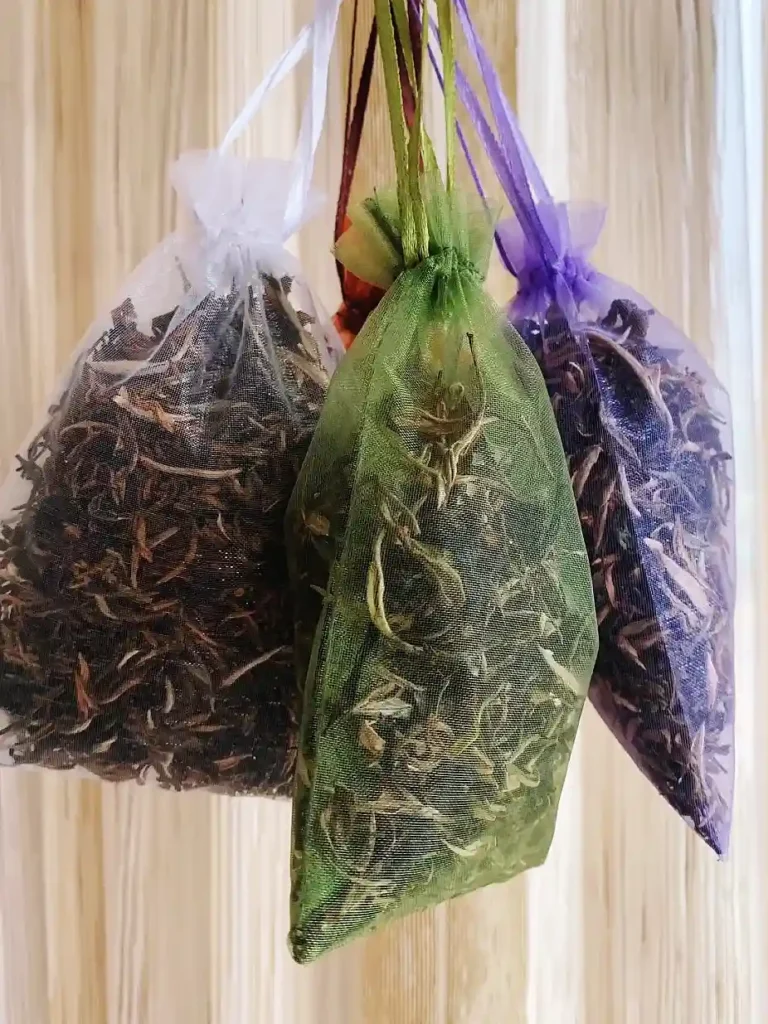
Beauty and Skincare
Tea’s antioxidants and anti-inflammatory properties make it a valuable addition to your beauty routine:
- Eye De-puffer: Place cooled, damp tea bags or leaves on your eyes to reduce puffiness and dark circles.
- Facial Scrub: Mix used tea leaves with honey for a gentle, exfoliating face scrub.
- Hair Rinse: Use cooled tea as a final rinse after shampooing to add shine and reduce dandruff.
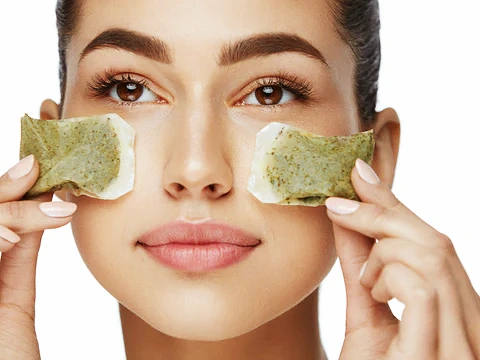
Odor Neutralizer
Used tea leaves can effectively absorb and neutralize odors:
- Refrigerator Deodorizer: Place a bowl of dried used tea leaves in your fridge to absorb odors.
- Shoe Freshener: Put dried tea leaves in small fabric pouches and place them in smelly shoes overnight.
- Hands Deodorizer: Rub wet tea leaves on your hands after cooking with garlic or onions to neutralize the smell.
Culinary Uses
While it might seem counterintuitive, used tea leaves can still contribute to your culinary endeavors:
- Smoky Flavor: Use damp, used tea leaves in a smoker to add a unique flavor to meats or vegetables.
- Tea Eggs: In Chinese cuisine, cracked hard-boiled eggs are often re-boiled with used tea leaves for flavor and appearance.
- Marinade Enhancer: Add used tea leaves to marinades for an extra layer of flavor in your dishes.
Can You Reuse Tea Leaves to Make More Tea?
While we’ve explored numerous ways to repurpose used tea leaves, you might be wondering if it’s possible to reuse them for their original purpose – making tea. The answer is yes, but with some caveats.
Many tea varieties, especially whole leaf teas, can be steeped multiple times. This practice, known as re-steeping or multiple infusions, is common in many tea cultures, particularly with certain types of oolong, pu-erh, and high-quality green teas. However, the number of times you can re-steep and the resulting flavor profile will vary depending on several factors:
| Aspect | Key Points |
|---|---|
| Can Tea Leaves Be Reused? | Yes, with some considerations. Many teas, especially whole leaf teas, can be steeped multiple times. |
| Tea Types Suitable for Re-steeping |
|
| Leaf Quality and Form | Whole leaf teas are better for re-steeping than broken leaves or tea bags due to slower flavor release. |
| Steeping Time and Temperature | Adjust parameters: increase steeping time and sometimes use higher water temperatures for subsequent infusions. |
| Best Practices for Re-steeping |
|
Tea Type
Different tea types lend themselves to re-steeping to varying degrees:
- Oolong and Pu-erh: These teas are renowned for their ability to withstand multiple infusions, often improving in flavor with subsequent steeps.
- Green and White Teas: High-quality varieties can often be re-steeped 2-3 times.
- Black Teas: While some can be re-steeped, they generally don’t hold up as well to multiple infusions as other types.
- Herbal Teas: These can often be re-steeped, but the flavor may become significantly weaker after the first infusion.
Leaf Quality and Form
Whole leaf teas generally perform better for re-steeping than broken leaves or tea bags. The intact leaves release their flavors more slowly, allowing for multiple flavorful infusions.
Steeping Time and Temperature
For successful re-steeping, adjust your brewing parameters. Subsequent steeps often require longer steeping times or slightly higher water temperatures to extract the remaining flavors.
Best Practices for Re-steeping
If you decide to explore the world of multiple infusions, here are some tips to get the most out of your tea leaves:
- Start with high-quality, whole leaf teas.
- Use the appropriate water temperature for each tea type.
- Increase steeping time slightly with each subsequent infusion.
- Pay attention to the color and aroma of your brew – these can indicate when the leaves have given up most of their flavor.
- Store used leaves properly between steeps if you’re not re-steeping immediately. Keep them moist but not soaking, and use within 24 hours to prevent bacterial growth.
Conclusion
In conclusion, the journey of your used tea leaves doesn’t have to end after the first steep. Whether you choose to re-steep for another hot cup, try a cold brew, or repurpose them for gardening, cleaning, or beauty applications, those humble leaves have a lot more to offer. By exploring these options, you’re not only getting more value from your tea but also contributing to a more sustainable, waste-conscious lifestyle.
We serve thousands of satisfied tea enthusiasts in our tea house each year, and we’re excited to share these exceptional teas with tea lovers worldwide at Orientaleaf.com.

References
- Wan, X., Li, D., & Zhang, Z. (2008). Green tea and black tea consumption and risk of coronary heart disease: a meta-analysis. The American Journal of Clinical Nutrition, 88(4), 1121-1127.
- Daglia, M., Antiochia, R., Sobolev, A. P., & Mannina, L. (2014). Untargeted and targeted methodologies in the study of tea (Camellia sinensis L.). Food Research International, 63, 275-289.
- Pérez-Burillo, S., Giménez, R., Rufián-Henares, J. A., & Pastoriza, S. (2018). Effect of brewing time and temperature on antioxidant capacity and phenols of white tea: Relationship with sensory properties. Food Chemistry, 248, 111-118.
- Zeng, L., Zhou, Y., Fu, X., Mei, X., Cheng, S., Gui, J., … & Lin, Z. (2017). Does oolong tea (Camellia sinensis) made from a combination of leaf and stem provide an optimal balance in aroma and taste components?. Food Chemistry, 237, 488-498.
- Kochman, J., Jakubczyk, K., Antoniewicz, J., Mruk, H., & Janda, K. (2021). Health Benefits and Chemical Composition of Matcha Green Tea: A Review. Molecules, 26(1), 85.
